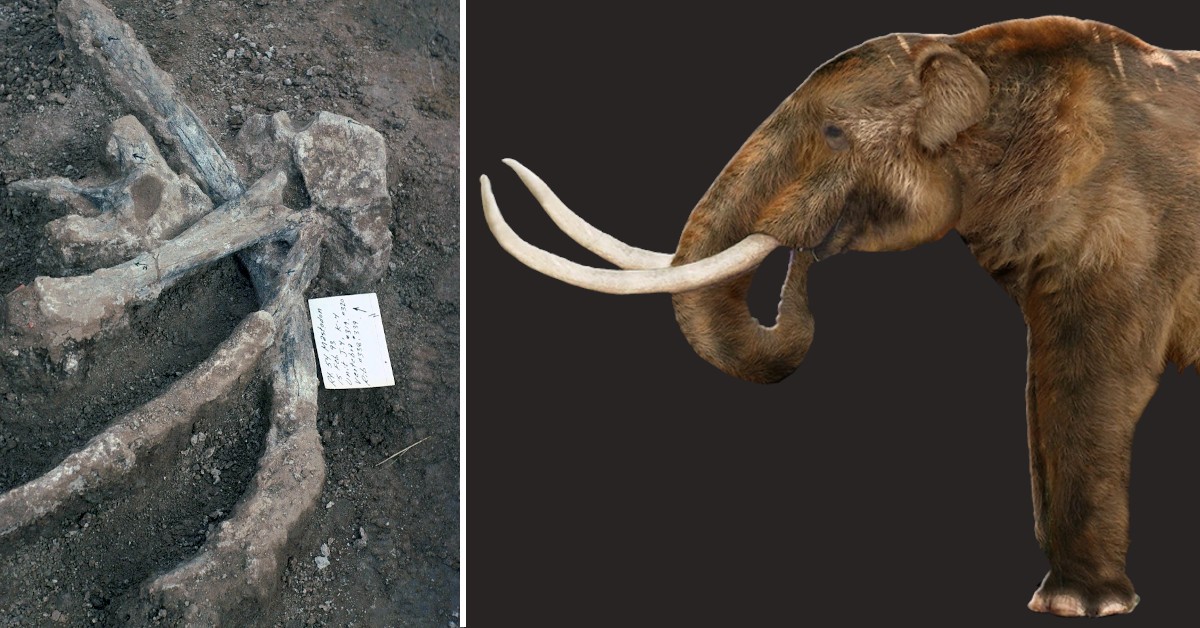A 130,000-year-old mastodon skeleton that appears to have been cut by human tools was discovered by paleontologists in America, where people were not supposed to have arrived for another 100,000 years.

In a groundbreaking discovery that could upend our understanding of human history, paleontologists have uncovered a 130,000-year-old mastodon skeleton that appears to have been butchered by humans, NBC reported. The shocking find was unearthed in America and dates to tens of thousands of years before the history books say people arrived there.
The discovery was made at the Cerutti Mastodon site in San Diego, California, where a team of scientists from the San Diego Natural History Museum and the Center for American Paleolithic Research were excavating the remains of a mastodon. As they began to study the bones, they noticed distinctive marks and fractures that appeared to have been caused by human tools. Further analysis confirmed that the marks were indeed the result of human activity, and radiocarbon dating revealed that the mastodon had died around 130,000 years ago.

“I know people will be skeptical of this because it is so surprising and I was skeptical when I first looked at the material itself. But it’s definitely an archaeological site,” said Steven Holen of the Center for American Paleolithic Research in South Dakota.
“It appears to be impossible that a mastodon could somehow force its own tusk into the underlying deposits,” the research team noted in their report, published in the journal Nature. The only reasonable explanation appears to be that humans did it.

The team at the Natural History Museum carefully excavated and examined the site, which was mostly preserved under several feet of dirt. They documented the location of each piece and saved samples of dirt and rock in addition to the bones and large stones.
They consulted experts in dating ancient geological deposits and bones, compared the stones found at the site to those from other well-documented sites in Africa from the same period, and examined other mastodon carcasses to determine if natural processes could have caused the bones to be arranged in the same patterns.
They even created their own stone tools and smashed elephant bones to test if it was possible to do so and if the resulting bones looked similar to those found at the site. Ultimately, they ruled out the possibility that scavenging animals or construction work at the nearby State Route 54 had caused the damage to the bones.

The implications of this discovery are enormous, with the potential of turning North American archaeology upside down. For decades, it has been widely accepted that humans did not arrive in the Americas until around 15,000 years ago, with the Clovis culture being the first known human inhabitants. But this new evidence suggests that people were in America more than 100,000 years earlier than previously thought.
However, the researchers were careful to point out that their findings are preliminary, and that more research is needed to confirm the true nature of the marks and fractures on the mastodon bones. They have also suggested that the humans who butchered the mastodon may not have been the ancestors of modern Native Americans, but rather a different group of people who migrated to the Americas via a land bridge or by boat.

The discovery is not only important for American prehistory but also for understanding human evolution and migration patterns. Not only does it push back the known presence of humans in the Americas by more than 100,000 years, it may also imply that human populations were capable of more sophisticated technologies, such as using tools and weapons, much earlier than previously thought. The findings are expected to spark further research and excavations in the area, which will undoubtedly yield more insights into the mysterious past of human evolution and migration.
